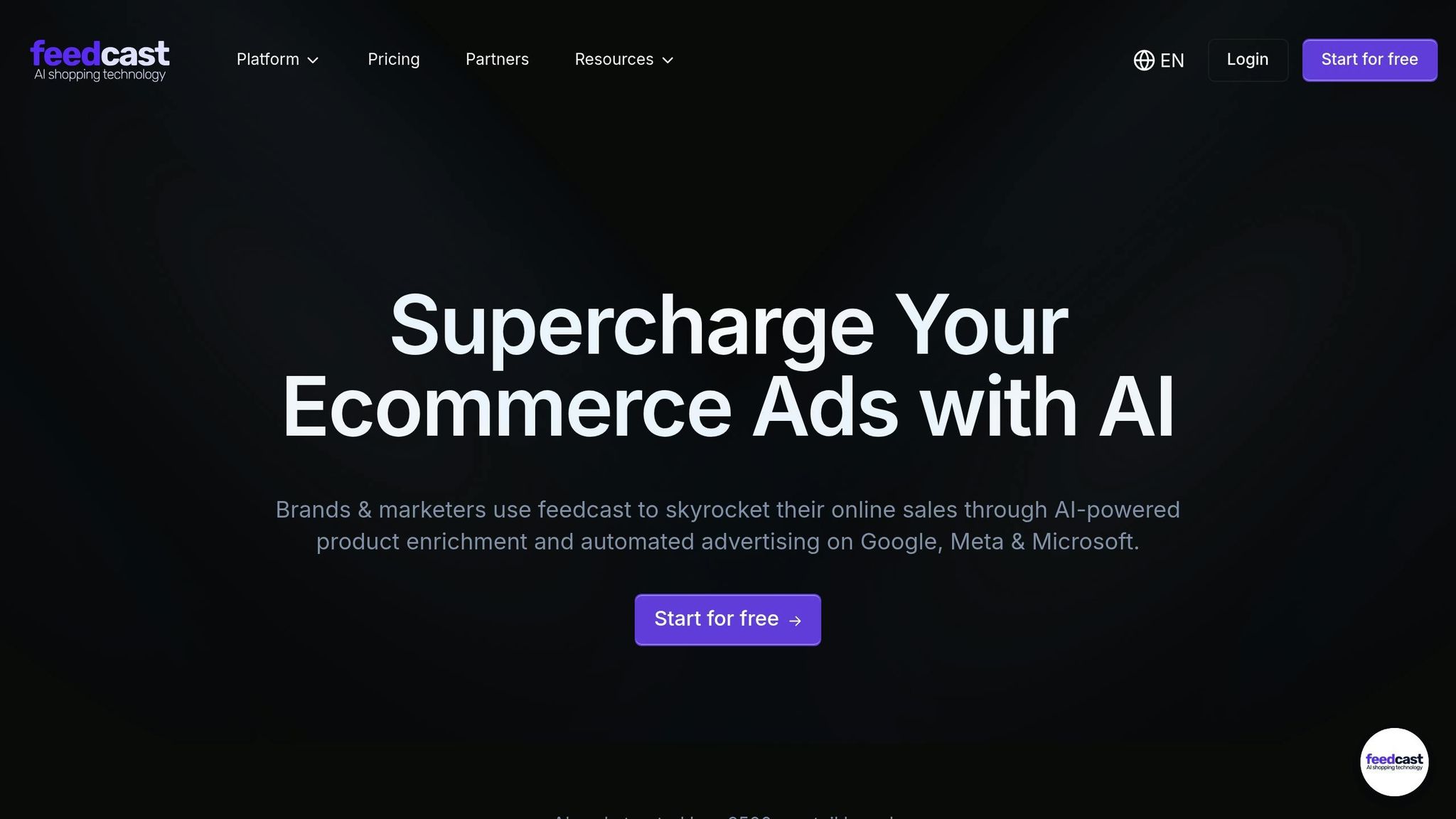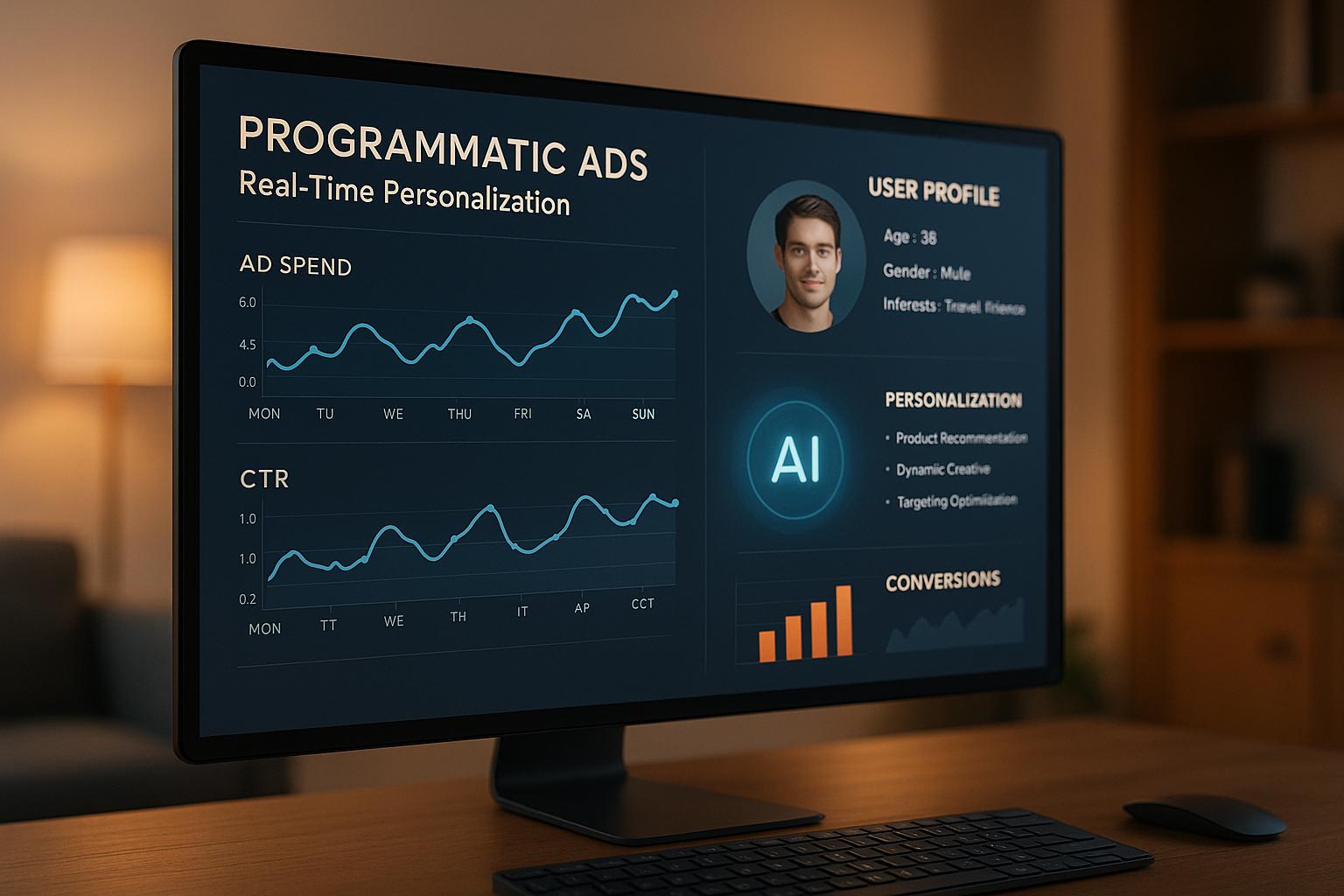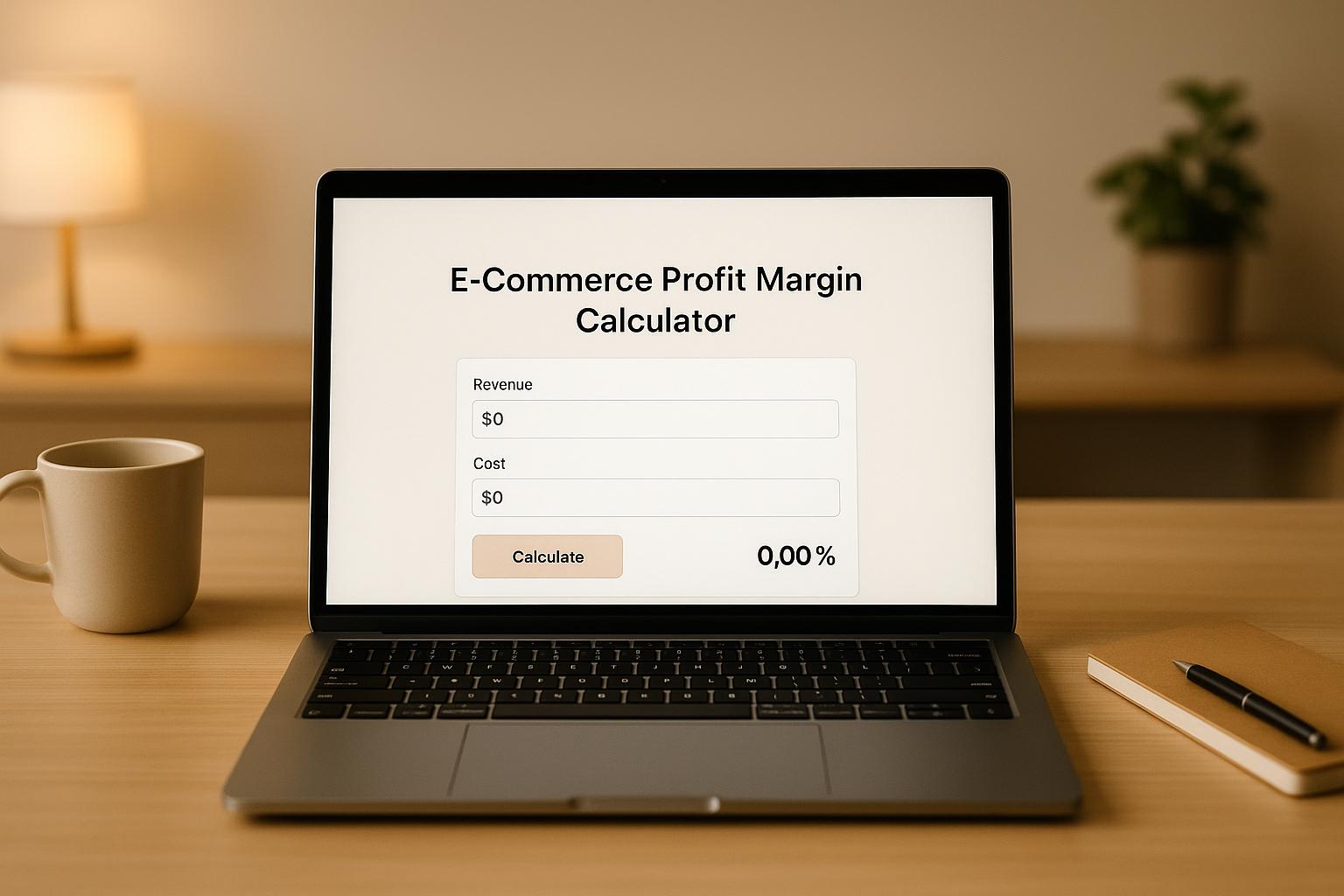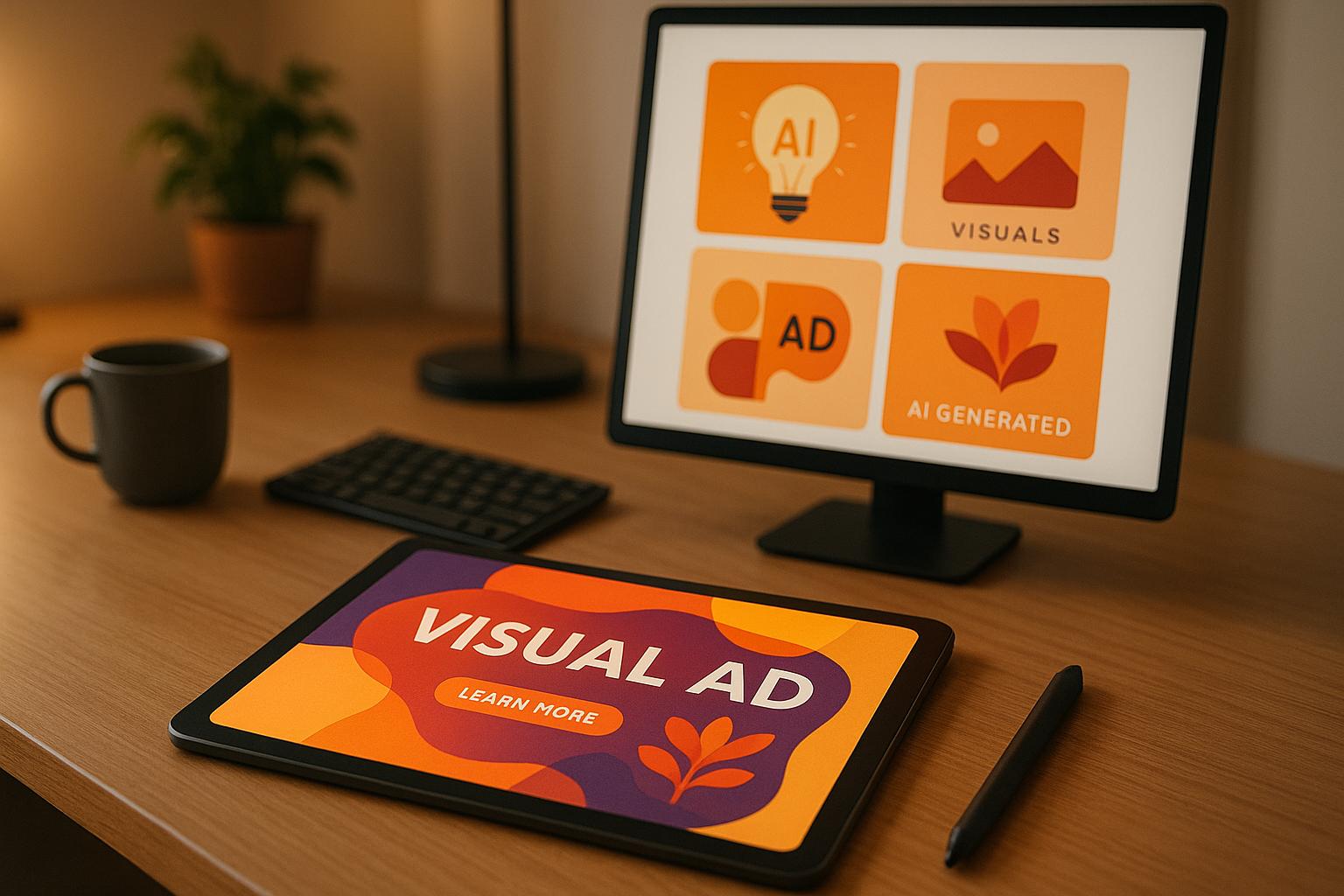How AI Improves A/B Testing Results
AI-powered A/B testing is transforming how businesses optimize their marketing campaigns. Unlike manual methods, AI automates test creation, monitors performance in real time, and analyzes complex data faster and more accurately. This means businesses can save time, reduce costs, and achieve better results by identifying what works across multiple platforms and audience segments.
Key Benefits of AI in A/B Testing:
- Faster Testing: What used to take weeks can now be done in days.
- Complex Analysis: AI evaluates multiple variables (e.g., audience, timing, visuals) at once.
- Real-Time Adjustments: AI reallocates resources to high-performing ads instantly.
- Improved Accuracy: Machine learning identifies subtle trends for better decision-making.
- Scalability: AI handles testing across platforms like Google, Facebook, and Instagram effortlessly.
For e-commerce businesses, this means boosting conversions, reducing wasted ad spend, and staying competitive in a fast-paced market. AI tools like Feedcast.ai centralize testing, automate ad creation, and provide actionable insights, making advanced testing accessible to businesses of all sizes.
Optimize with ABTesting AI in 2025 to Increase Traffic Before Competitors Do!
AI Technologies That Improve A/B Testing
AI has introduced advanced tools and techniques to tackle the challenges of traditional, manual A/B testing. By automating data analysis, generating creative content, and optimizing campaigns in real time, AI-powered A/B testing enables e-commerce businesses to conduct tests on a much larger scale and with greater precision.
Machine Learning for Pattern Recognition
Machine learning algorithms excel at identifying patterns in massive datasets - patterns that would be impossible for humans to spot. In A/B testing, these algorithms analyze historical campaign data, user behaviors, and performance metrics to predict which ad variations are most likely to succeed. This makes testing more efficient and scalable for e-commerce.
Unlike humans, who might focus on just a few metrics, machine learning processes dozens of variables simultaneously. These include factors like timing, device type, location, demographics, and purchase history. By considering such a wide range of data points, machine learning delivers deeper insights into what drives performance.
Over time, these algorithms improve through supervised learning. As they process more test results, they refine their ability to predict which combinations of headlines, images, and calls-to-action will resonate with specific audience segments. This constant learning ensures that your A/B testing campaigns become smarter and more effective with each iteration.
In addition to pattern recognition, AI automates the creation of ad variations, saving time and effort.
Automated Ad Variant Creation
Manually creating multiple ad versions can be a tedious and time-consuming process. AI-powered tools simplify this by generating dozens - even hundreds - of ad variations in minutes.
Using Natural Language Processing (NLP), these tools analyze high-performing ad copy to produce new versions that maintain the same tone and messaging while experimenting with different elements. For example, they might tweak the emotional tone, adjust urgency, or restructure the call-to-action to test new approaches.
On the visual side, computer vision algorithms can test various image layouts, color schemes, and product arrangements. These systems recognize which visual elements typically perform well for specific product categories and generate variations designed to boost performance.
The real game-changer is combinatorial testing. Instead of being limited to testing just two ad versions, AI can create and evaluate hundreds of combinations. For example, it might pair different headlines with various images, test multiple call-to-action buttons with different colors, or align product descriptions with a range of promotional offers.
This automated process not only saves time but also ensures you’re exploring high-performing combinations that might have been overlooked in manual testing. It also eliminates the creative bottlenecks that often slow down traditional A/B testing workflows.
Beyond creation, AI takes testing to the next level with real-time optimization.
Real-Time Campaign Optimization
One of AI’s biggest advantages is its ability to optimize campaigns in real time. Unlike traditional A/B tests, which often run for fixed durations, AI systems continuously monitor performance and adjust parameters on the fly, ensuring campaigns remain efficient and effective.
Using dynamic allocation algorithms, AI shifts more budget toward the best-performing ad variations as soon as they’re identified. For instance, if one ad version is driving significantly higher conversions, the system will allocate more resources to that version while reducing spend on less effective ones.
AI also excels at audience optimization. It can detect which audience segments respond best to specific ad variations and adjust targeting accordingly. For example, if younger audiences engage more with video ads while older groups prefer static images, the system ensures each segment sees the most suitable format.
Taking it a step further, predictive analytics anticipates performance trends before they fully unfold. If early data suggests an ad’s performance is starting to decline - perhaps due to ad fatigue or changing market dynamics - the system reallocates resources to alternative high-performing options.
This speed and adaptability are especially crucial for e-commerce businesses. During fast-paced periods like Black Friday or the holiday season, when market conditions and consumer preferences shift rapidly, real-time AI optimization ensures your campaigns stay competitive and effective throughout the day.
How to Set Up AI-Powered A/B Testing
Setting up AI-powered A/B testing effectively combines automation with clear, data-driven objectives. The process unfolds through several key stages, each building on the last to create campaigns that deliver measurable results.
Define Clear Goals
Start by setting specific, measurable goals that align with your business priorities. Use metrics like CTR (click-through rate), conversion rate, CPA (cost per acquisition), or ROAS (return on ad spend) to guide your objectives. For instance, you might aim to boost add-to-cart rates by 10% over the next month.
Historical campaign data is your best ally here. AI analytics can help identify which metrics most closely tie to revenue growth. For example, a retailer might set a short-term goal to improve conversion rates by 3% within two weeks, using those insights to drive larger gains in future tests.
Make sure your goals are clearly documented and measurable through your analytics platform. This clarity will serve as a roadmap for your testing process and ensure accurate evaluation of your results.
Set Up Test Variables and Audience Segments
AI tools shine when it comes to analyzing large datasets to identify the most impactful variables for testing. These platforms can sift through historical and real-time data, demographics, and purchase behaviors to suggest which elements - such as ad copy, visuals, call-to-action buttons, or landing page layouts - are worth testing [2][3].
Use AI to segment your audience effectively. For instance:
- Separate new users from returning ones.
- Compare mobile versus desktop users.
- Account for regional differences.
AI might recommend testing product images for new customers while focusing on promotional messaging for repeat buyers [2][3].
To isolate the impact of individual variables, test one element at a time. For example, if you're testing ad headlines, keep other factors like images, targeting, and calls-to-action consistent across variants. This approach ensures you can pinpoint what drives performance changes [4].
Start with simpler tests to gain initial insights. For example, test two different headlines for a specific product category before moving on to more complex scenarios involving multiple variables. This step-by-step method helps you build a solid understanding of your audience's preferences.
Use AI Tools for Test Execution and Monitoring
Once you’ve defined your goals and variables, deploy an AI-powered platform to handle setup, traffic distribution, and real-time monitoring. Unlike traditional A/B testing, which splits traffic evenly, AI systems use dynamic traffic allocation methods - like Multi-Armed Bandit algorithms - to shift more users toward higher-performing variants as data accumulates [1][2][5].
For example, a Multi-Armed Bandit algorithm powered by AI improved user retention by 12% across iOS and Android platforms [1][2][5].
Set up automated monitoring with real-time dashboards to track key metrics. Start with small-scale rollouts (e.g., 10–20% of traffic) and expand gradually as results confirm improvements [4]. This approach minimizes risks while allowing you to gather meaningful data quickly.
Platforms like Feedcast.ai simplify this process by centralizing management of multi-channel campaigns, automating ad variations, and providing unified analytics. By using such tools, you avoid juggling multiple systems and can rely on a single source of truth for your testing data. This streamlined process ensures your campaigns are continuously optimized based on actionable insights.
Analyze Results and Apply Learnings
When analyzing results, focus on metrics tied to your original goals, such as CTR, conversion rate, CPA, or ROAS. AI tools can also provide deeper insights, like segment-specific performance and predictive analytics [1][3].
Look for trends that go beyond individual test outcomes. For instance, if AI reveals that a specific headline format consistently performs well with a certain demographic, apply this insight to similar audiences in future campaigns. Feeding new data into the AI system will enhance its predictive accuracy and improve your overall strategy [1][3].
Pay attention to both business KPIs and AI-generated metrics, such as user engagement rates. This dual focus ensures your results are not only statistically valid but also meaningful for your business objectives [4].
Document your findings to create a knowledge base. Record which combinations of headlines, visuals, and targeting strategies work best for specific audience segments. Over time, this repository will become an invaluable resource for refining future campaigns.
Use AI insights to adjust your broader advertising strategy. For example, if tests show that video content outperforms static images for younger audiences, consider shifting your creative focus to include more video assets for that demographic.
sbb-itb-0bd1697
AI-Powered vs Manual A/B Testing Comparison
Manual A/B testing can be a slow and tedious process, while AI-powered testing brings automation and real-time adaptability into the mix. Traditional methods rely heavily on human effort and static steps, but AI turns testing into a dynamic, self-adjusting system.
Side-by-Side Comparison: Manual vs AI-Powered A/B Testing
Here’s a breakdown of how the two approaches differ and what that means for advertising results and resource use:
| Criteria | Manual A/B Testing | AI-Powered A/B Testing |
|---|---|---|
| Speed of Experimentation | Slow and time-consuming | Fast and automated |
| Scale and Scope | Limited | Large-scale, multi-variable |
| Personalization | Minimal | Dynamic and responsive |
| Manual Effort | High | Low |
| Real-Time Adaptability | None | Adaptive adjustments |
| Impact on ROI | Incremental improvements | Significant performance boosts |
Traditional A/B testing follows a rigid, step-by-step process that can take days or even weeks to complete. AI-powered systems, on the other hand, automate these tasks, cutting timelines down to just hours or days.
Another key difference lies in how traffic is managed. Manual testing splits traffic evenly across all variants, which often leads to wasted impressions on weaker options. AI, however, uses adaptive algorithms like the Multi-Armed Bandit to shift traffic dynamically toward high-performing variants as data rolls in.
Personalization is another area where AI excels. While manual methods might only distinguish between new and returning users, AI taps into machine learning to tailor content and ad variants in real time, based on user behavior, preferences, and context.
This stark contrast explains why AI-driven testing delivers faster and more effective results.
Main Benefits for E-commerce Businesses
Switching from manual to AI-powered A/B testing brings a host of benefits for e-commerce businesses. One of the most immediate advantages is time savings, as automation takes over tasks like experiment setup, traffic distribution, and data analysis - tasks that previously consumed hours of manual effort.
AI’s ability to optimize in real-time leads to better ROI. By minimizing wasted impressions on underperforming variants and quickly identifying winning strategies, AI ensures marketing budgets are used more efficiently. This translates into higher conversion rates compared to the slower, incremental gains of manual testing.
For example, the Amma pregnancy tracker app adopted an AI-powered Multi-Armed Bandit algorithm in 2024 to enhance its push notification campaigns. The result? A 12% boost in user retention across iOS and Android platforms, achieved through real-time adjustments to notification content and timing based on user engagement data [1].
Beyond ROI, AI elevates customer engagement by delivering tailored experiences at scale. Instead of showing the same ad to broad segments, AI adapts messaging, visuals, and offers to match individual user behavior and preferences.
AI also simplifies multi-channel management. It can handle simultaneous tests across different platforms, enabling businesses to coordinate strategies and apply insights across their entire marketing ecosystem.
Lastly, AI’s predictive analytics help businesses stay ahead of market trends. By forecasting user behavior and estimating the likelihood of clicks or conversions, AI can adjust campaigns proactively - improving targeting and engagement before performance starts to dip.
These benefits pave the way for tools like Feedcast.ai to streamline and optimize multi-channel campaigns. Up next, we’ll explore how Feedcast.ai leverages these capabilities for unified campaign management.
Using Feedcast.ai for AI-Powered A/B Testing

Streamlined testing is essential for refining ad campaigns effectively, and Feedcast.ai brings all the tools you need for AI-powered A/B testing into one platform. Designed specifically for e-commerce businesses, it simplifies managing multiple advertising channels while leveraging the speed and precision of AI.
With Feedcast.ai, you can handle the entire A/B testing process across major advertising platforms. This unified system eliminates the inefficiencies of traditional methods, making it easier to optimize campaigns and achieve better results. Let’s explore how Feedcast.ai centralizes multi-channel campaigns and enhances testing strategies.
Managing Multi-Channel Campaigns in One Place
Running tests across multiple platforms typically requires juggling separate dashboards and dealing with fragmented data. Feedcast.ai changes that by consolidating everything into a single, user-friendly interface that connects directly to your ad accounts.
This centralized approach revolutionizes A/B testing. You can set up coordinated tests with consistent variables across platforms, making it easier to compare results and identify what works. The unified dashboard provides a clear view of all active tests, with performance metrics from every connected channel displayed side by side. This setup allows you to quickly spot trends and determine which combinations of creative elements, targeting settings, and messaging perform best.
If you’re running shopping campaigns, Feedcast.ai's status as a certified Google CSS partner adds extra value. This partnership can lead to cost savings on Google Shopping campaigns while maintaining the platform’s AI-driven optimization and testing capabilities.
The multi-channel approach also unlocks more advanced testing possibilities. For instance, you can run the same product ads on different platforms simultaneously, compare audience reactions, and use insights from one channel to improve performance on others.
AI-Powered Ad Creation and Optimization
Feedcast.ai uses artificial intelligence to supercharge every step of the A/B testing process. One standout feature is its ability to generate personalized ad copy tailored to each platform, factoring in the unique characteristics and best practices of each channel.
This automation tackles a common challenge in traditional A/B testing: creating enough ad variations to test effectively. Instead of manually writing dozens of versions, the AI generates multiple optimized ads automatically, ensuring they align with different audience segments and platform requirements.
Another key feature is product data enrichment, where AI enhances product titles, descriptions, and attributes. This leads to more relevant ads, which improves click-through and conversion rates - critical metrics for any A/B test.
Feedcast.ai also excels at audience targeting. It identifies and targets the most responsive segments, whether it’s acquiring new customers or retargeting existing ones. This precision ensures your ads reach the right people with the right message at the right time.
Additionally, the platform uses Multi-Armed Bandit algorithms for dynamic traffic allocation. Unlike traditional A/B testing, which evenly splits traffic, this AI-driven method redirects traffic toward better-performing variants in real time. This approach maximizes your return on ad spend while your tests are still running.
By combining optimized ad creation with intelligent targeting and traffic allocation, Feedcast.ai ensures your campaigns deliver results more efficiently.
Real-Time Analytics and Reporting
Feedcast.ai provides real-time analytics that give you immediate insights into how your tests are performing. No need to wait for daily or weekly reports - key metrics like click-through rates, conversions, and engagement are updated in real time and segmented by platform, audience, and ad variant.
This instant feedback allows you to make quick, informed decisions. Poor-performing variants can be adjusted or paused before they drain your budget, ensuring your campaigns stay on track.
The platform also offers custom reporting and performance segmentation, letting you analyze results from multiple perspectives. Want to see how a specific audience segment responded to an ad at a particular time of day? Or compare performance across channels? Feedcast.ai makes it easy to dive into the details that matter most to your business.
What sets Feedcast.ai apart is its ability to turn analytics into action. The AI identifies patterns in your data and suggests new test ideas, audience adjustments, and optimizations based on actual performance - not guesswork. This iterative approach ensures each test builds on the last, creating a continuous cycle of improvement.
With these tools, Feedcast.ai helps businesses run smarter, faster tests that enhance ROI. The combination of real-time data, AI-driven insights, and centralized reporting simplifies the process, enabling more advanced testing strategies with less effort. For e-commerce businesses aiming to scale their advertising, this platform is a game-changer.
Conclusion and Key Takeaways
The move from manual to AI-driven A/B testing has revolutionized e-commerce advertising, delivering faster results, greater precision, and an ability to scale like never before.
This guide has highlighted how AI reshapes A/B testing at every level - from generating test variations automatically to optimizing campaigns in real time and uncovering patterns through advanced analysis. These tools don’t just speed up the process - they make it far more effective in identifying what works and improving return on ad spend. When combined with automated workflows, these advancements lead to measurable, impactful results.
Why AI is the Future of A/B Testing
AI’s capability to optimize continuously and in real time is paving the way for the next wave of advertising advancements. Machine learning algorithms can analyze massive datasets instantly, spotting trends and patterns faster than any human team could. This becomes especially critical as e-commerce businesses expand across multiple platforms and audience segments.
Think about the complexity of running ads today. An e-commerce brand might advertise simultaneously on Google, Facebook, Instagram, and Microsoft Ads, each platform requiring unique strategies for targeting, creative content, and bid management. Traditional A/B testing, done manually, struggles to keep up with this level of complexity and often creates bottlenecks that hinder growth.
AI removes these obstacles by optimizing campaigns in real time. Instead of waiting for a test to conclude before making adjustments, AI systems shift traffic to high-performing variants immediately. This ensures every advertising dollar contributes to learning and revenue generation, without the delays of traditional methods.
While manual testing might handle a handful of variables at a time, AI can juggle dozens - testing combinations of headlines, images, audiences, and bidding strategies - all without overwhelming marketing teams or stretching resources too thin.
How Feedcast.ai Simplifies A/B Testing
Feedcast.ai takes the power of AI and turns it into an intuitive, easy-to-use platform. By centralizing campaign management, it eliminates the fragmentation that often makes advanced testing feel out of reach.
With automated ad creation and real-time analytics, Feedcast.ai equips businesses to make quick, informed decisions and continuously refine their campaigns. This approach ensures that every test delivers actionable insights while keeping wasted ad spend to a minimum.
What’s more, Feedcast.ai offers flexible pricing, from a free tier to premium plans, making AI-powered testing accessible to businesses of all sizes. Whether you’re managing a catalog of 1,000 products or 100,000, the platform provides the tools to run complex tests without requiring deep technical know-how.
In today’s competitive landscape, Feedcast.ai helps businesses grow smarter and achieve higher ROI.
FAQs
How does AI make A/B testing faster and more effective?
AI takes A/B testing to the next level by automating crucial steps like creating hypotheses, conducting tests, and analyzing data as it comes in. This automation not only cuts down on manual work but also accelerates decision-making, allowing teams to move through iterations much faster.
Using AI, businesses can test multiple variables at once, pinpoint successful strategies more quickly, and fine-tune campaigns with greater precision. The result? Improved ad performance and streamlined processes, all in less time. It’s a game-changer for boosting efficiency and driving better outcomes.
How does AI enhance A/B testing to deliver better results?
AI takes A/B testing to the next level by using machine learning algorithms to sift through massive datasets, uncover patterns, and forecast results. This means marketers can fine-tune their targeting, speed up testing processes, and make smarter, data-backed decisions.
With AI-powered tools, tasks like creating tests, ranking experiments by importance, and delivering real-time insights can be automated. This efficiency allows for testing a wider range of variations across multiple platforms. The result? Higher conversion rates and better campaign outcomes, all thanks to strategies refined with pinpoint accuracy.
How can e-commerce businesses use AI-powered tools like Feedcast.ai to enhance their A/B testing and marketing strategies?
E-commerce businesses can take advantage of AI-driven tools like Feedcast.ai to simplify and enhance their A/B testing efforts. The first step? Setting clear goals - whether it’s increasing conversion rates or improving ad engagement. By defining key metrics from the start, businesses can zero in on the aspects that truly matter.
Using Feedcast.ai, companies can automate the creation of personalized test variations, monitor performance in real-time, and adjust campaigns based on data insights. This approach not only saves time but also delivers more precise and actionable results. Focusing on high-impact elements - like ad copy, visuals, or call-to-action buttons - can amplify the effectiveness of these tests, leading to better outcomes and a stronger return on investment.
Geoffrey G.




